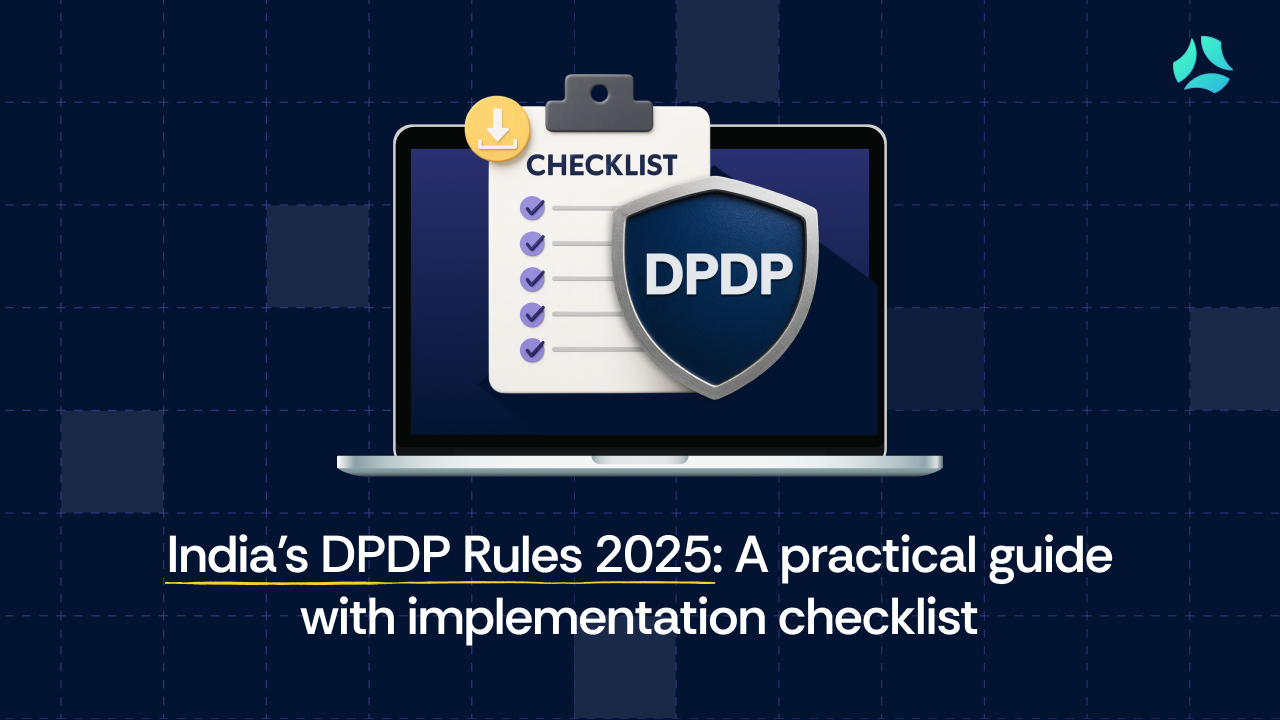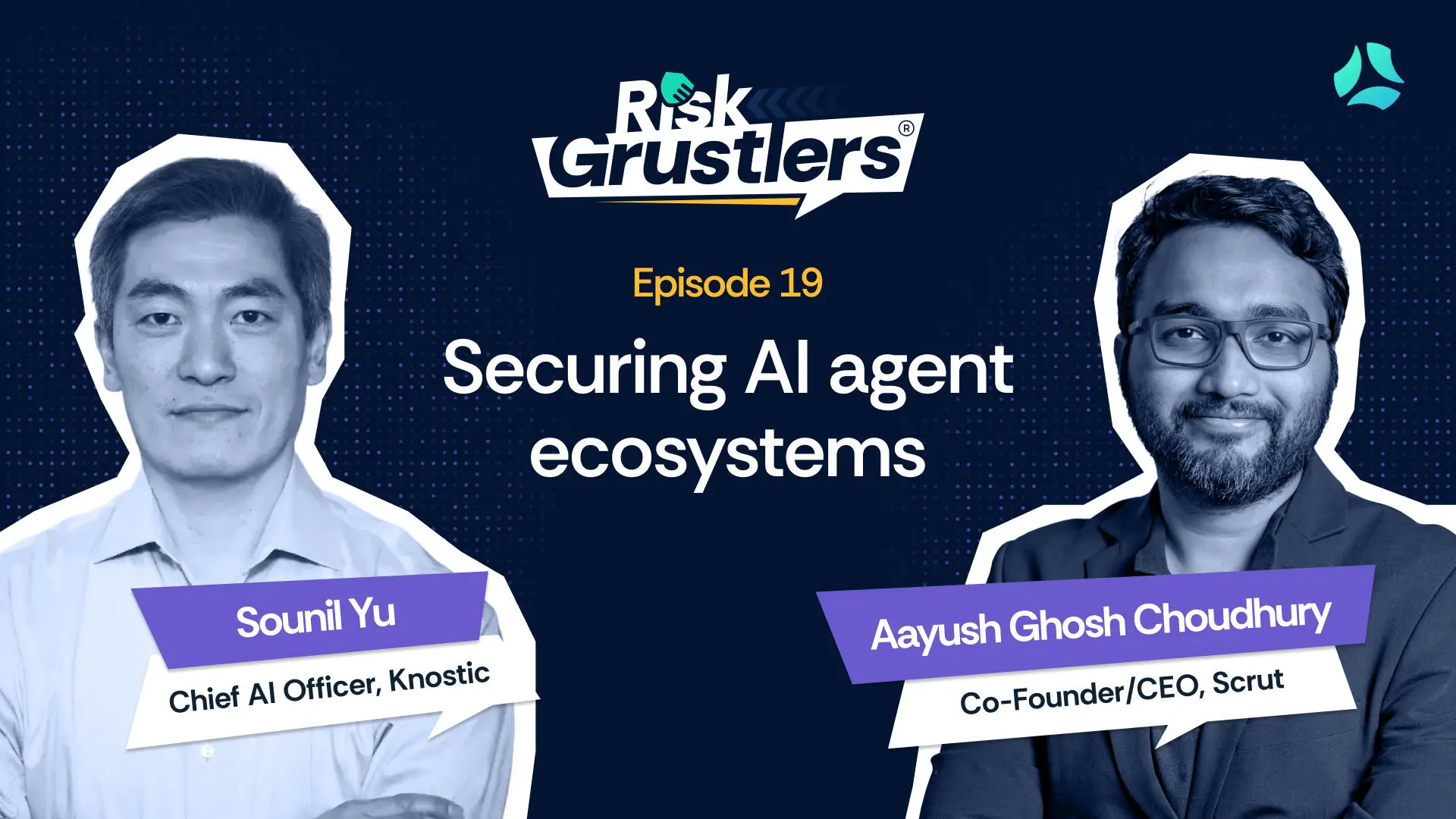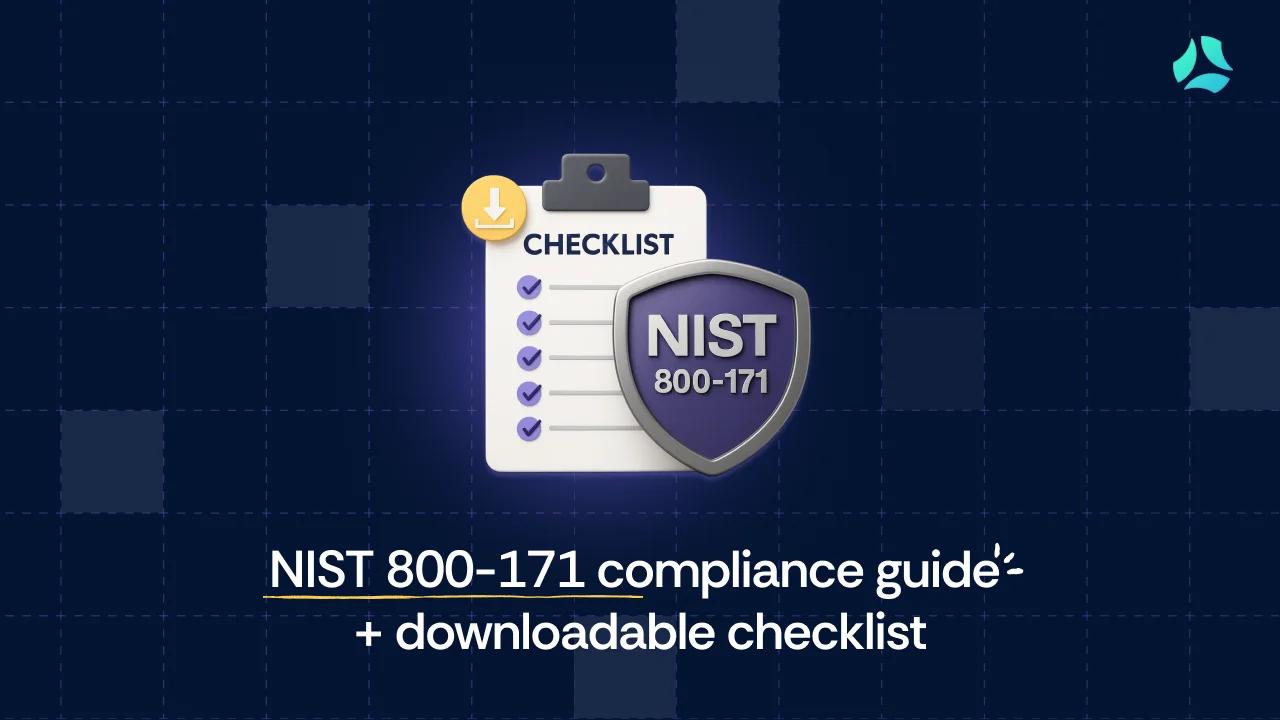Compliance monitoring in 2025: Best practices & tools for continuous compliance

Annual audits are no longer enough. With regulations evolving rapidly and enforcement becoming stricter, organizations that rely on periodic compliance checks risk falling behind—or worse, facing heavy penalties. Continuous compliance monitoring is the solution: an ongoing, proactive approach that ensures adherence to government regulations, industry standards, and internal policies at all times.
Though there are no universal standards for regulatory compliance monitoring, each organization establishes its own continuous compliance program, often influenced or constrained by external standards or requirements. For example, industry-specific regulations like the Health Insurance Portability and Accountability Act (HIPAA) for healthcare and the Dodd-Frank Act for U.S. financial institutions require constant monitoring by organizations to prevent non-compliance and avoid penalties.
This article examines best practices for continuous compliance, helping you identify top compliance monitoring tools to adhere to regulatory requirements and policies while maintaining a robust security posture.
What is continuous compliance monitoring?
Continuous compliance is the process of monitoring a company’s adherence to regulatory, security, and internal policy requirements. Unlike traditional compliance audits, which are periodic and reactive, continuous compliance involves automated monitoring of controls, real-time assessments, and proactive risk management embedded into daily operations.
Continuous compliance gives organizations real-time visibility into all relevant activities and enhances risk awareness, helping organizations stay aligned with regulations, standards, and internal policies.
Key principles of continuous compliance
Like any compliance program, information security (infosec) compliance is built on key principles that, when followed, help you stay ahead of gaps in controls and emerging risks. By understanding these principles, you can establish processes, workflows, or even select compliance monitoring platforms that align with them.
Real-time monitoring
Real-time compliance monitoring software continuously scans applications, collecting data across operational areas and tracking compliance-related activities. It helps organizations instantly detect deviations and flag risks, enabling them to plan mitigation strategies. The constant monitoring enhances policy enforcement, improves audit readiness, and prevents security incidents.
Flexible risk assessments
Timely risk assessments enable an organization's risk posture to keep pace with a constantly evolving regulatory and business environment. They should adapt to new regulations, operational changes, and emerging technology risks. Flexible risk assessments ensure that organizations' compliance processes are responsive and relevant to a dynamic business and regulatory environment.
Centralized compliance operations
A unified compliance monitoring platform centralizes policies, procedures, and audits, integrating multiple processes such as policy management, controls mapping, evidence collection, and issue remediation. This approach provides organizations with a comprehensive view of compliance activities that helps them meet regulatory and legal standards. An integrated approach to compliance enhances department collaboration, minimizes delays, and improves compliance efficiency.
Regular audits
When audits and assessments are done periodically, organizations can certify that their processes and systems comply with applicable standards and frameworks through internal and external audits. The validation process reinforces accountability and demonstrates the organization's commitment to compliance, helping build trust with regulators and stakeholders.
Dynamically adjust access permissions
Continuous compliance involves periodically reviewing access permissions to ensure that user access rights align with their roles and the principle of least privilege. It also enforces strict access control policies, minimizing the risk of unauthorized access and potential data breaches.
Access control is a mandatory requirement of many compliance standards, and continuous compliance enables you to conduct and manage access reviews effectively.
Automated reporting
Compliance processes that rely on spreadsheets and ad hoc reporting often face difficulties, including manual errors and delays. Automated compliance reporting solutions with extensive integration capabilities enable the generation of detailed, accurate reports at a predetermined frequency. The reports provide valuable insights, enabling compliance teams to expedite compliance and enhance the reliability of audits.
Audit logs for transparency and accountability
Real-time logging of every access request and activity, such as policy updates, evidence uploads, and changes to assignees, is crucial for compliance.
Additionally, integrating compliance management platforms with cloud security tools enables organizations to maintain continuous compliance without requiring manual intervention.
Difference between one-time audits and real-time monitoring
Why is continuous compliance important?
Regulatory landscapes constantly evolve, making continuous compliance essential for risk mitigation and audit readiness. This ensures adherence to frameworks like SOC 2, ISO 27001, etc., strengthens data security, and helps avoid punitive actions and fines.
1. Minimize financial risks
Regulatory non-compliance can result in hefty fines, lawsuits, and business disruptions. Take, for example, the U.S. Department of Health and Human Services (HHS) Office for Civil Rights (OCR), which penalized Warby Parker $1.5 million in a HIPAA cybersecurity investigation in February 2025.
Compliance monitoring supports adherence to laws like GDPR, HIPAA, SOX, or 21 CFR Part 11, minimizing legal risks and punitive fines.
2. Enhance security and data protection
Continuous compliance monitoring enables organizations to detect vulnerabilities and misconfigurations before they become threats. It helps organizations reduce the attack surface area, minimizing data breaches and security incidents.
For instance, as cloud adoption has increased, so have the attacks, with a reported increase in cloud intrusions spread across multiple cloud environments.
Organizations are using multiple cloud services, each representing a potential vulnerability unless secured and monitored. Data breaches have also increased significantly. A 2023 Apple-commissioned study revealed 2.6 billion personal records were compromised between 2021 and 2023, and 80% of the violations involved data stored in the cloud.
The expanding attack surface, along with sophisticated cyberattacks aided by advancements in AI, makes continuous compliance a must for any organization.
3. Improve audit processes
Continuous compliance streamlines audits by maintaining real-time records, automating compliance tracking, and ensuring ongoing policy enforcement. It readily provides all the data required for the audit, eliminating last-minute data collection and reducing human errors.
4. Maintain customer trust
A compliance failure, such as a data breach or regulatory violation, can negatively impact an organization's credibility and trustworthiness. Regular compliance monitoring enhances security, mitigates risks, and reinforces trust among customers and stakeholders by preventing such incidents.
5 best practices for continuous compliance monitoring
Implementing compliance monitoring solutions ensures real-time risk detection, policy enforcement, and audit readiness. In addition to technology, organizations must follow best practices to ensure continuous compliance with key regulatory frameworks and maintain a strong security posture. The five best practices for continuous compliance monitoring are as follows:
1. Understand your compliance requirements
Understand your organization's regulatory requirements and the specific needs of key stakeholders, including board members, regulators, and internal teams. These may include state, federal, or global regulations, as well as internal business rules and policies. Industry-specific regulations, such as HIPAA for healthcare and the GLBA for financial institutions, products or services like loans, financial or investment advice, or insurancefinancial services industry, add further complexity.
A clear compliance framework serves as the foundation for continuous compliance, ensuring that organizations remain aligned with legal, regulatory, and industry-specific mandates.
2. Implement a centralized compliance platform for real-time visibility
A centralized compliance dashboard provides real-time visibility into compliance status, risk alerts, and audit readiness, enhancing continuous compliance. The dashboard visualizes assessments, processing activities, assets, and vendors, offering valuable insights into compliance performance. Users can drill down into specific data segments within reports to determine the root cause of deviations and take immediate steps to resolve them.
3. Leverage external compliance expertise
While automation enhances efficiency, human expertise remains essential for navigating the complexities of compliance. Organizations should supplement in-house capabilities with external compliance specialists to:
- Fine-tune compliance strategies.
- Stay ahead of regulatory changes.
- Gain assistance from experienced professionals in cases of bottlenecks, such as policy creation and evidence vetting.
“White glove” support for compliance goes beyond traditional technology solutions, incorporating expert guidance to help organizations adapt to evolving regulations and mitigate risks effectively.
4. Conduct regular internal and external audits
Regular internal and external audits and assessments enable organizations to prevent compliance issues from escalating into significant violations that attract regulatory punitive actions.
Internal audits proactively identify risks, enabling organizations to address issues before they attract regulatory scrutiny. External audits provide independent verification, reinforcing audit-readiness and strengthening trust with regulators and stakeholders.
5. Effective communication and collaboration
The organization must ensure that communication is streamlined within the team, across departments, and with external entities to prevent misunderstandings and ensure that all stakeholders have real-time access to insights. They must also foster interdepartmental collaboration for comprehensive compliance coverage and continuous monitoring.
Top 3 compliance monitoring tools in 2025
1. Scrut
Scrut is a compliance automation and risk management platform that integrates multiple compliance frameworks. It centralizes risk management, control monitoring, and audits, providing organizations with a unified approach to compliance. With real-time risk monitoring across infrastructure and applications, Scrut enhances an organization's security posture and supports compliance with over 50 frameworks.
The platform offers intuitive dashboards and reporting capabilities, delivering actionable insights such as open risks, unassessed vendors, and compliance gaps. It helps organizations promptly address issues and stay audit-ready at all times.
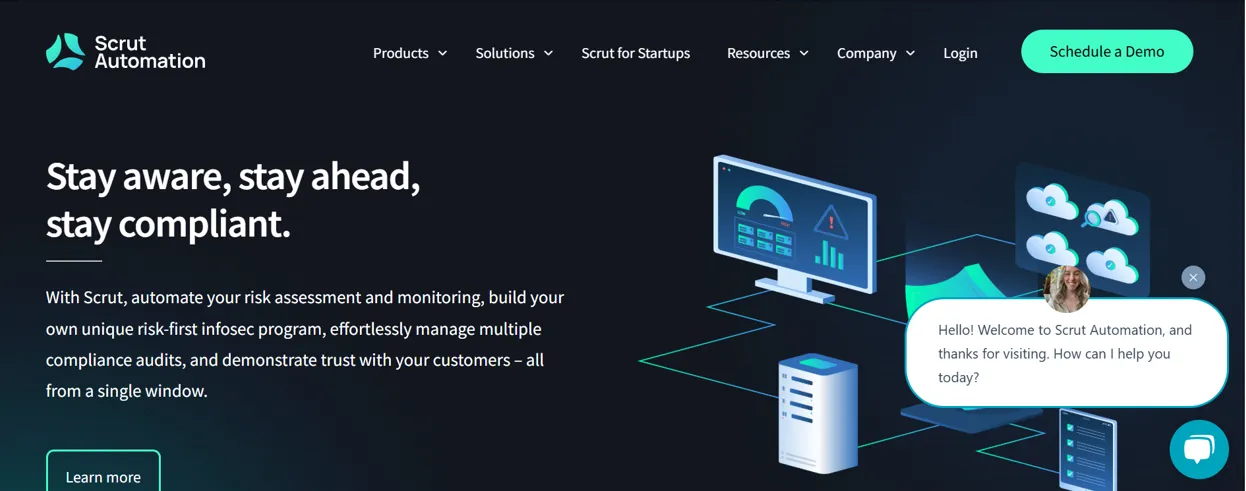
Key features
- Compliance management: Scrut provides over 75 policies that are mapped to more than 1400 controls, enabling organizations to establish and execute policies using the platform's inline editor. They can import an existing policy document and sync policies, accelerating compliance monitoring.
- Scrut Monitor automatically connects with external applications to pull evidence for compliance frameworks, such as ISO 27001, SOC 2, GDPR, and custom frameworks. This eliminates the need for employees to manually sift through documents, freeing up time for strategic audit preparation instead of tedious administrative tasks. The intuitive dashboard helps you assess security posture, track compliance progress, and pinpoint areas that need attention.
- Risk management: Scrut scans your ecosystem to identify risks across infrastructure, applications, vendors, employees, access, and more. Organizations can build and develop their centralized risk registers or use a preloaded risk library within the risk management module. Organizations can continuously monitor risks by setting up alerts and notifications that are integrated with their messaging and email apps for the latest updates on their risk posture.
The risk management dashboard enables you to monitor risks at different stages of their lifecycle, with drill-down capability for each stage. It provides valuable insights into your vendors’ compliance and infosec posture.
- Audit management: Scrut helps organizations perform audits by framework and control, and includes a corrective action tracker. Streamline your audit process by granting auditors direct access to the platform. Manage the entire audit lifecycle in real time—eliminating tedious email exchanges and manual file sharing. With Scrut, collaboration becomes effortless, ensuring an efficient and hassle-free audit experience.
- Task and workflow management: Organizations can use Scrut’s automated workflows to create, assign, and monitor tasks to firmly control their information security (infosec) posture. The platform integrates with task management tools, allowing users to create tickets, assign tasks, and track progress directly from the platform.
2. Hyperproof
Hyperproof’s GRC solution is an all-in-one tool that helps you align with multiple compliance requirements, manage internal controls, define optimal compliance processes, automate manual tasks, and continuously monitor your compliance posture.
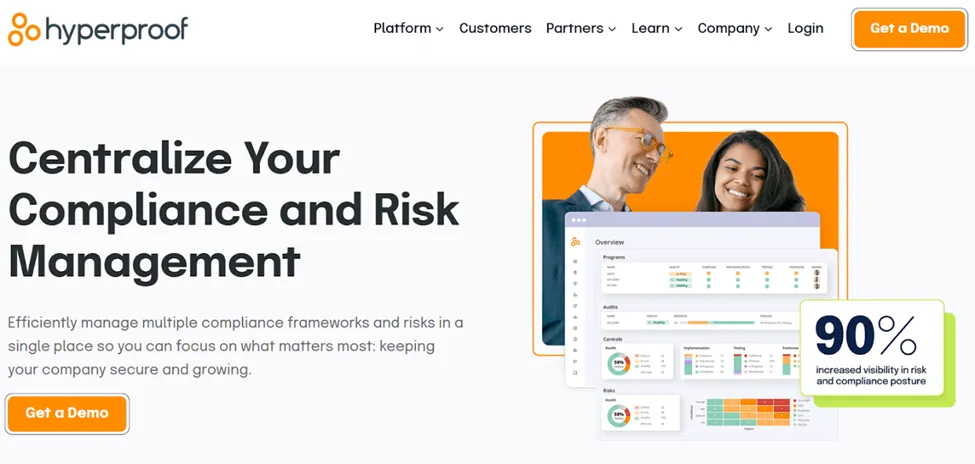
Key features
- Automated compliance: The platform streamlines compliance with SOC 2, ISO 27001, NIST, GDPR, HIPAA, and more. It identifies compliance gaps in real time, tracks risks, and automates remediation, ensuring proactive compliance enforcement.
- Integration: Its integration capabilities span various services, ranging from cloud storage to project management, communications, cloud infrastructure, DevOps, security, and business applications, facilitating automated evidence collection.
- Custom reporting: It offers a dashboard and report-building service, leveraging the expertise of analytics and compliance professionals to create custom dashboards tailored to organization’s compliance needs.
3. Thoropass
Thoropass, formerly Laika, facilitates continuous monitoring to maintain compliance with InfoSec and privacy frameworks. It enables businesses to implement, monitor, and manage compliance, accelerate audits, and mitigate risks efficiently.
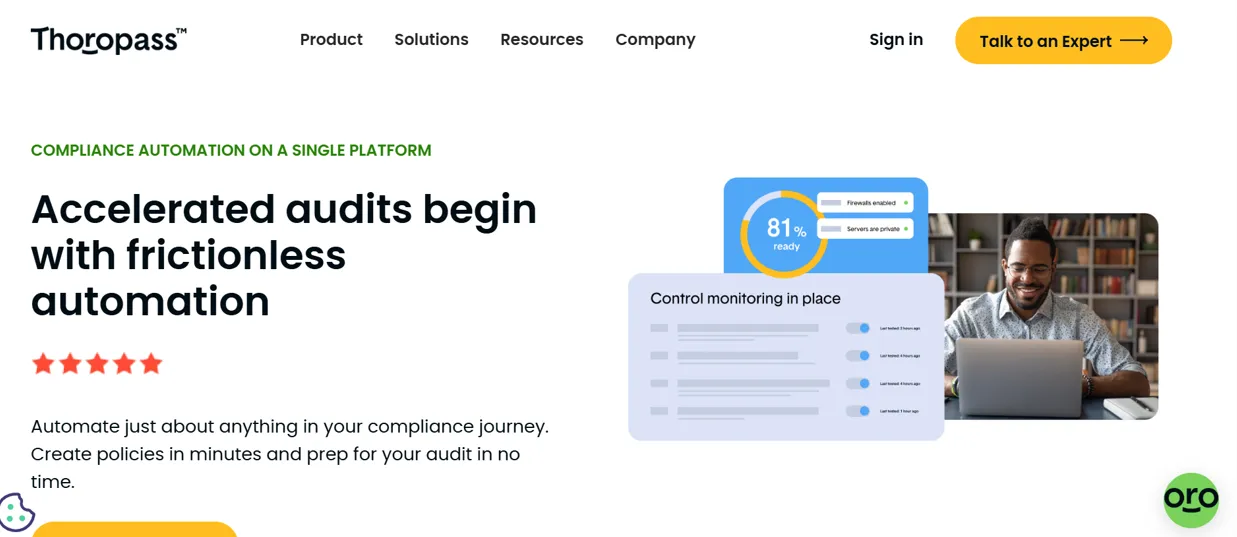
Key features
- Automated compliance management: The platform automates compliance processes, reducing manual effort and accelerating the certification path. It supports SOC 2, ISO 27001, HIPAA, GDPR, and many other frameworks.
- Integrated audit management: It simplifies audit processes with features like automated scheduling, task assignment, and real-time tracking. Automated notifications and alerts ensure that audits are completed on time.
- Continuous monitoring: Any deviations are promptly identified and addressed, maintaining a constant state of readiness for audits and regulatory reviews.
How Scrut helps businesses achieve continuous compliance
Scrut simplifies continuous compliance by providing real-time monitoring, automated risk assessments, and accelerated audit readiness. With built-in frameworks for SOC 2, ISO 27001, GDPR, and more, Scrut enables businesses to stay compliant without manual interventions. By integrating with cloud environments, security tools, and DevOps workflows, Scrut ensures proactive, automated, and always up-to-date compliance.
Scrut’s compliance monitoring solution is scalable for businesses of all sizes—whether you are a startup, a growth-stage company, or a mature enterprise. Unlike many compliance monitoring platforms that charge an additional fee for custom workflows, additional control mapping, creating new controls, and customizing controls based on security policies, Scrut allows you to customize workflows and controls at no extra cost. Schedule a demo to learn more.



